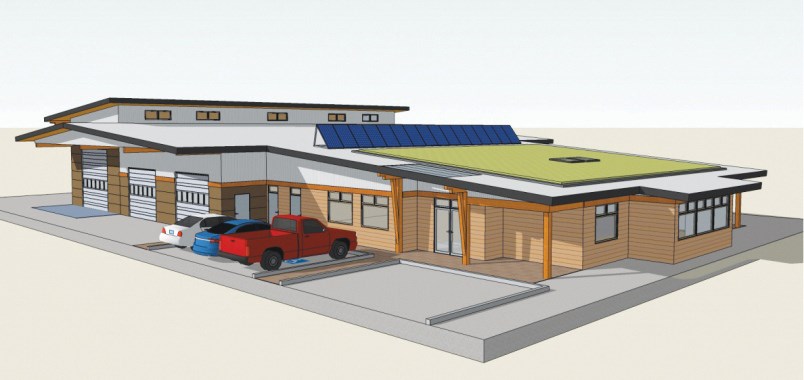More than a year after the previous council rejected going to residents for approval of a $4-million loan to build a new Public Works and Operations Centre on Dusty Road, plans are moving forward again.
After the 2018 council vote rejecting the proposal, which had gone from early estimates of around $2 million to a budget of $4.8 million, the district brought in consultants to conduct a needs assessment that would be the basis of a revised design.
David Whetter of Cornerstone Planning Group, the consultants hired to do the needs assessment, delivered his report at the Oct. 9 committee of the whole meeting.
Cornerstone’s assessment found the parks and public works operations in the district are “fragmented across four locations, which result in worker inefficiencies … [and] multiple locations make it extremely difficult to effectively manage supplies and equipment.”
The report also said the current operations centre is “poor quality” with “compromised staff support spaces.”
Cornerstone also found that municipal hall is also getting critically overcrowded. “This will be further exacerbated in the future as Sechelt grows and develops, given the need to hire more district staff to support such growth.”
Whetter told the committee that the Dusty Road site has the space to accommodate a single, new facility that would house the public works and parks staff as well as ease pressure on municipal hall, including potentially housing the archives.
He said the facility, which would be designed to serve the municipality for the next 20 years, should also be disaster-ready.
“You have to recognize that public works in particular, and parks to a degree, have a role in disasters and they have to be able to get out, get the roads cleared and that sort of thing, so it’s something that’s quite critical in terms of being able to operate in an emergency capacity,” Whetter said.
Mayor Darnelda Siegers said the conclusions of the Cornerstone report highlight issues raised in the previous design process.
“We actually have done a lot of this work before,” she said. “It’s interesting that the plan coming back after looking at a needs assessment by an outside firm is actually giving us the same as we were looking at before.”
Chief administrative officer Andrew Yeates told the committee that the next steps are to draft a detailed design and consider whether to follow a design-build model or have the district act as its own contractor.
“The last council had issues with the method of building, the style of building … so we want to look at all the different possible ways that we can do this and we also want to look at all the possible ways to easily add to this over time,” he said.
Siegers also pointed out that council would have to authorize either an Alternative Approval Process or referendum to go forward with the project.
“We’re going to have to go to AAP or referendum or something because we don’t have the money to build something. So we would need to get a design, and a Class A cost estimate to go out to the public,” she said. “We’re not going to get it done this winter, but it would be nice to get something done for staff next winter.”
Yeates said he expected staff to come back to council with timelines for design work and estimates “fairly quickly.”


.png;w=120;h=80;mode=crop)
